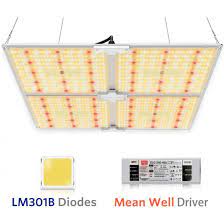Internet Cables Could Detect Earthquakes, Monitor Ocean Currents
Internet Cables Could Detect Earthquakes, Monitor Ocean Currents
Millions of miles of cable are connecting the Earth’s Internet with its regional networks and each other. These cables carry vast amounts of data, including everything from social media to email and financial transactions. Scientists have found a new way to use them also: to monitor ocean currents or detect earthquakes and tsunamis.
Outline for keywords:
-
What is the importance of Internet cables?
-
How are these cables laid?
-
How could this technology be used to monitor these events?
-
Conclusion
What is the importance of Internet cables?
Internet cables play an important role in helping to monitor and predict natural disasters, such as earthquakes, floods, and hurricanes. By monitoring the atmospheric and oceanic conditions, these cables can help forecasters make better predictions about where these events could occur.
In addition to predicting natural disasters, Internet cables are also used to monitor global climate change. By measuring data from many different points around the world, this technology can help scientists track how our changing environment is impacting our planet.
How are these cables laid?
Internet cables could detect earthquakes and monitor ocean currents, according to a new study. The cables would be able to send and receive signals very quickly, which would allow for more accurate earthquake detection and monitoring. The study also suggests that the cables could be used to monitor ocean current patterns.
The cable networks are currently limited in their ability to detect earthquakes quickly. This is because the signals taken from an earthquake take time to travel through the ground, air, and water networks. However, by using cable networks, the researchers were able to significantly reduce the time it took for the signals to reach their destination.
The cable networks were also able to better monitor ocean current patterns by using them as communication platforms between different parts of the world. Ocean currents can have a significant impact on climate and weather patterns around the globe. By monitoring these currents, scientists are better equipped to make informed decisions about how best to protect people and property from natural disasters.
How could this technology be used to monitor these events?
Internet cables could be used to monitor earthquakes and monitor ocean currents, according to a study published in the journal Physical Review Letters. The researchers developed a cable system that can identify ground motions up to five kilometers away. The system is also capable of measuring ocean current speeds and directions.
The cable system uses long, thin cables that are suspended between two towers. When an earthquake occurs, the cables detect the movement and transmit data about it to the towers. The system can also measure wave heights and periods.
The cable system could be used to monitor earthquakes in remote locations or damaged areas where conventional monitoring systems are not available. It can also be used to monitor ocean currents in coastal areas, which can impact both weather and marine life.
Conclusion
The future of earthquake monitoring and ocean current monitoring may be in cables. Scientists from the University of Washington have developed a cable system that can detect earthquakes as early as 6.5 kilometers below the Earth’s surface and monitor ocean currents at depths up to 1,200 meters. The technology is still in its early stages, but if it proves successful, it could revolutionize our understanding of how earthquakes and ocean currents interact and help us improve predictions for both phenomena.




